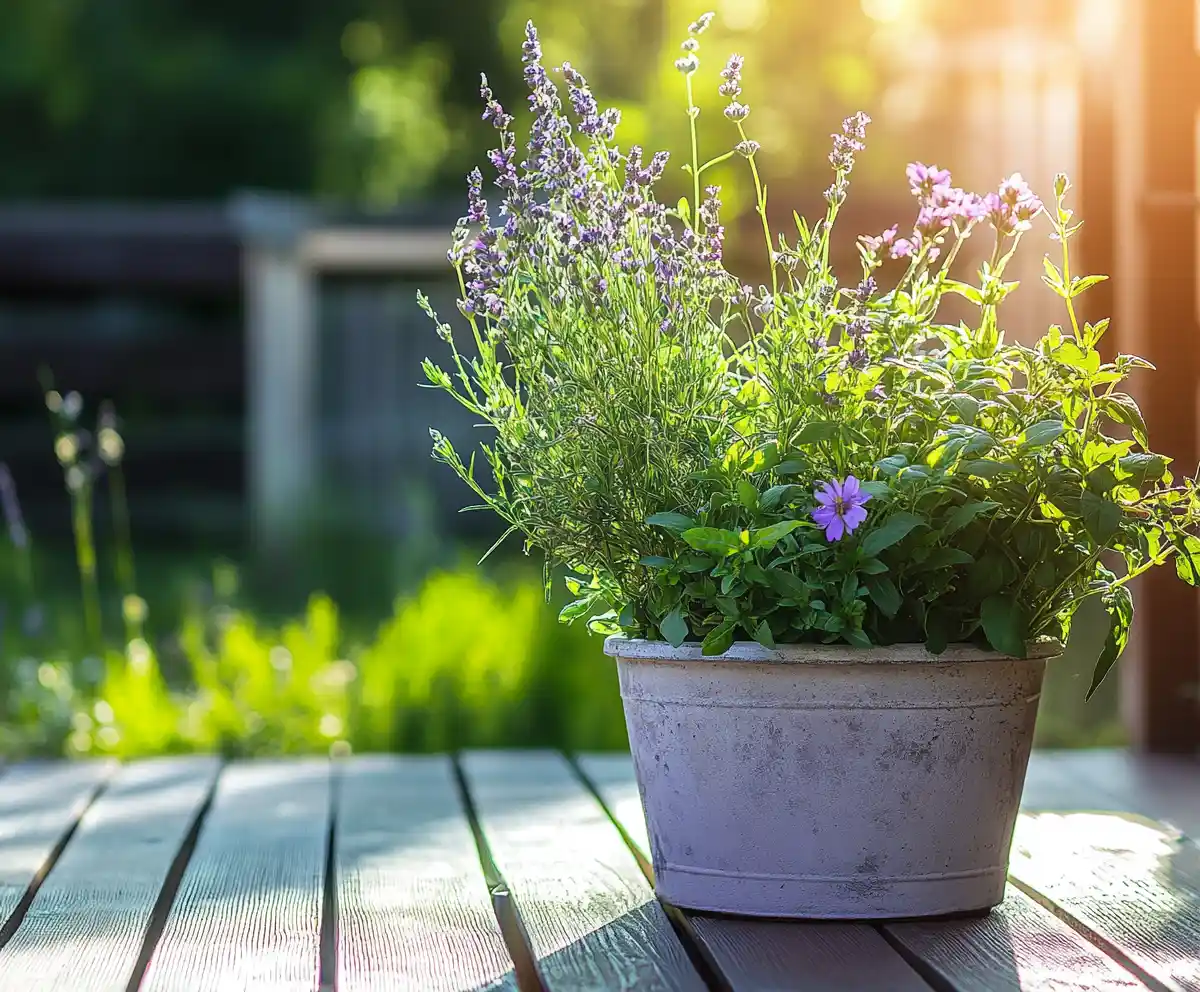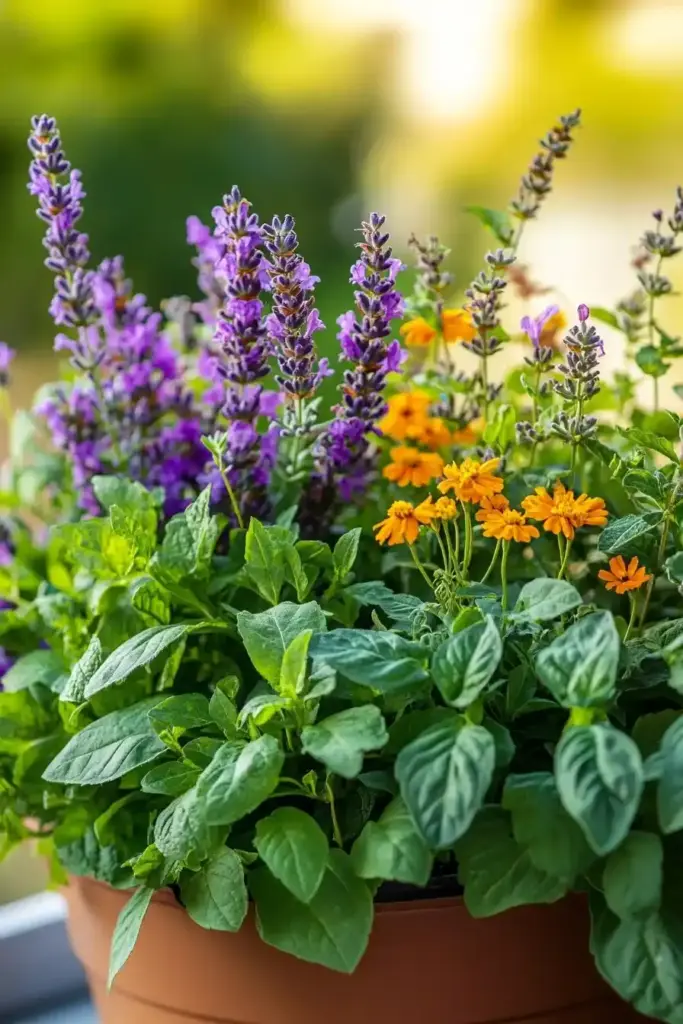Why You Need Mosquito-Repellent Container Gardens
Nothing ruins a relaxing evening on the patio faster than a swarm of mosquitoes. But what if your garden could work double duty—both beautiful and functional? With a little planning, you can grow mosquito repellent plants in a container garden that not only looks stunning but also helps keep those pesky insects at bay.
These powerful plants release natural compounds that mosquitoes can’t stand. And the best part? They’re easy to grow in containers, which means you can move them around your outdoor space wherever you need protection the most—on the deck, near seating areas, or by walkways.
In this guide, we’ll explore the top mosquito-repelling plants you can combine into one gorgeous, fragrant planter. You’ll also learn how to care for them, where to place your container for maximum effect, and a few extra tips to keep your space bite-free all summer long.
🪴 Best Mosquito Repellent Plants to Grow in Containers
The following plants were handpicked for their natural insect-repelling properties, stunning textures, and compatibility in container gardens. When grouped together, they create a lush, aromatic planter that not only beautifies your space but also serves a very practical purpose.
🌼 1. Marigold (Calendula ‘Bon Bon Bright Yellow’)
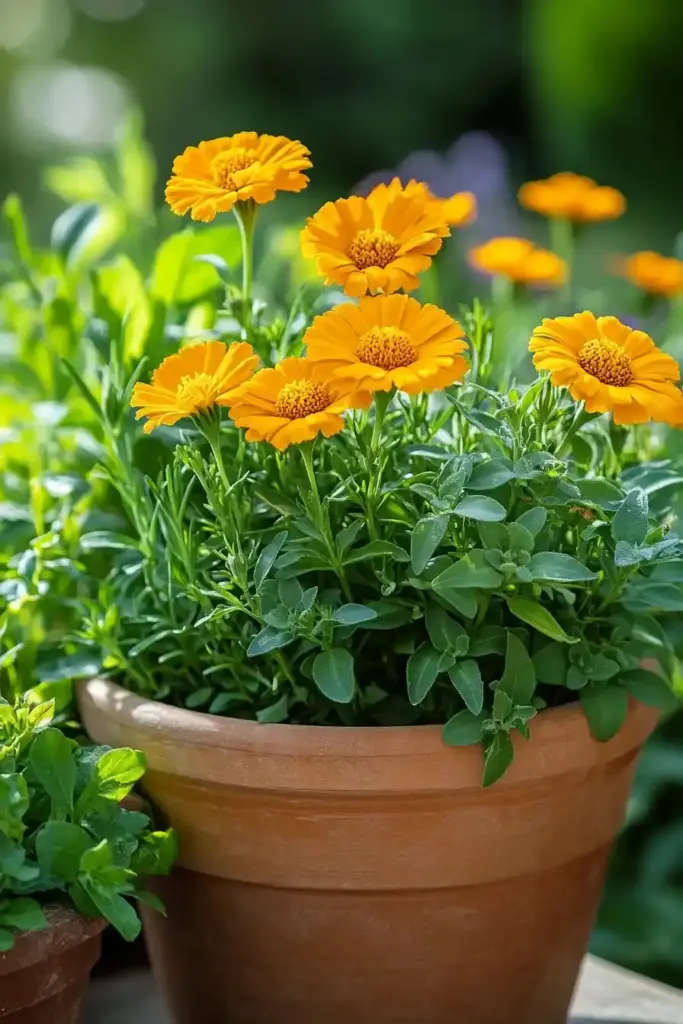
Why it works: Marigolds contain pyrethrum, a natural insect repellent commonly used in organic pest control. Their bright yellow blooms also add a cheerful pop of color to any container garden.
Container tip: These compact flowers thrive in full sun and reach about 12 inches tall—perfect for the front edge of your planter. Deadhead regularly to encourage continuous blooming.
💜 2. Lavender (Lavandula angustifolia ‘Thumbelina Leigh’)
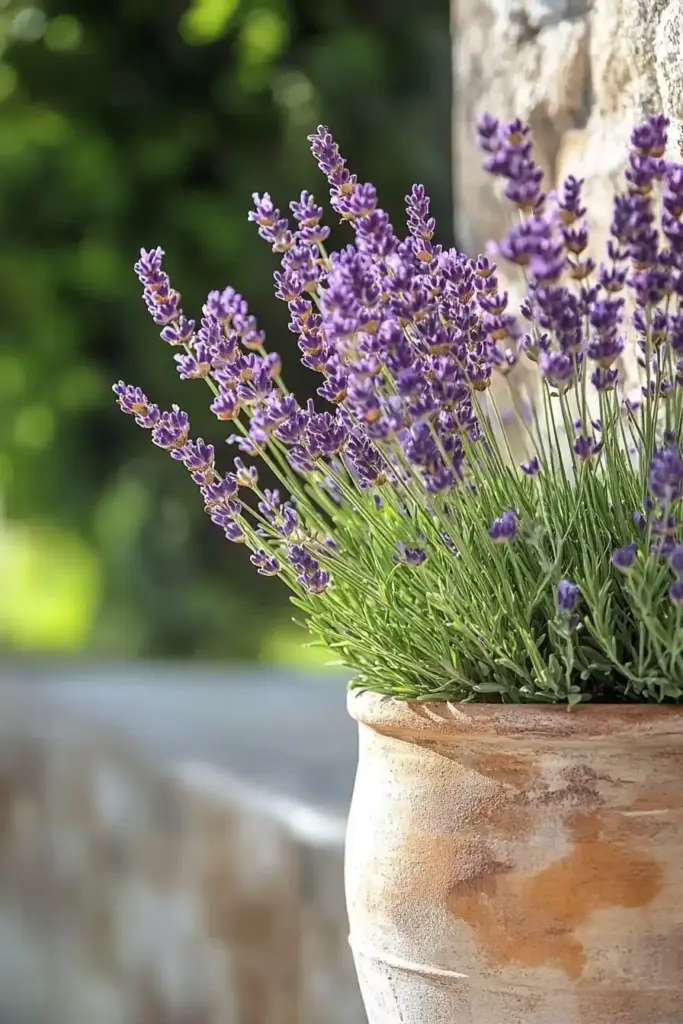
Why it works: Lavender’s strong floral aroma may be heavenly to us, but mosquitoes find it downright offensive. It’s also known to repel moths and flies.
Container tip: This compact variety maxes out at 12 inches, making it ideal for pots. Plant it in well-draining soil and trim back after each bloom cycle to encourage new flowers.
🧠 Pro Tip: Plant lavender near seating areas so you can brush up against it to release its fragrance into the air.
🍃 3. Pineapple Mint (Mentha suaveolens ‘Variegata’)
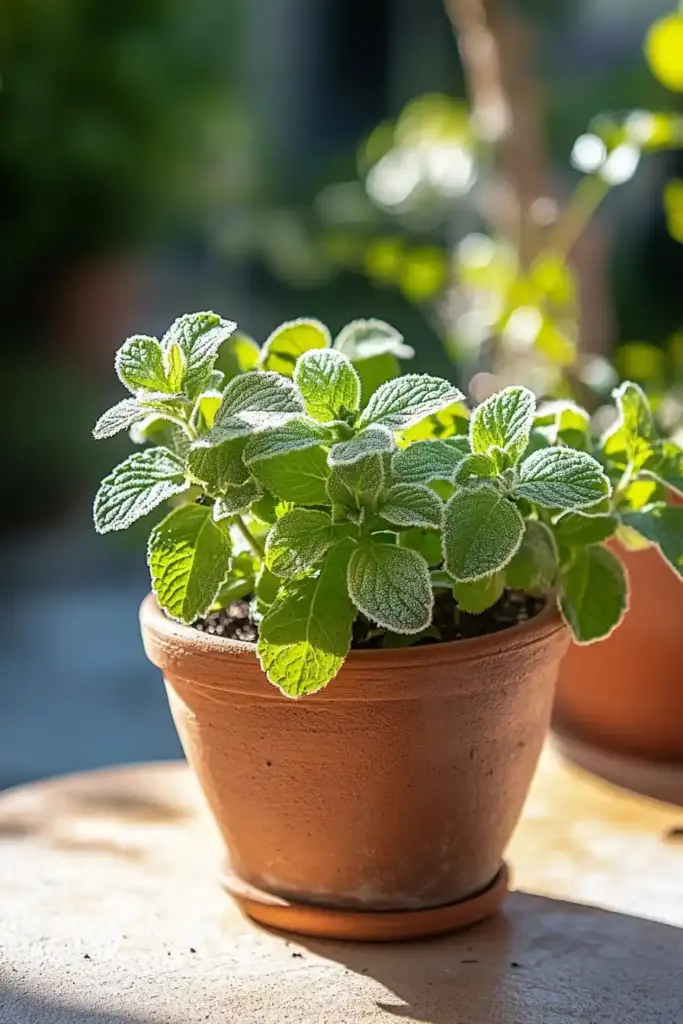
Why it works: Like most mints, pineapple mint gives off a strong scent that repels mosquitoes. Its fruity aroma is a bonus, and the variegated leaves add visual interest to your planter.
Container tip: Mint is vigorous and can take over, so keep it confined in a pot. Make sure it gets regular watering and partial to full sun.
📌 Bonus: The fuzzy, white-edged leaves are not only ornamental but can be crushed and rubbed on your skin for a quick natural repellent.
💙 4. Flossflower (Ageratum ‘Artist Blue’)

Why it works: This plant contains coumarin, a compound found in many commercial insect repellents. Whether it repels mosquitoes on its own is debated, but it’s still a great addition due to its vibrant color and pollinator-friendly flowers.
Container tip: Low-growing and bushy, this plant works well to fill in gaps around taller herbs. Prefers full sun and moist, well-drained soil.
🌿 5. Oregano (Origanum vulgare ‘Hot & Spicy’)
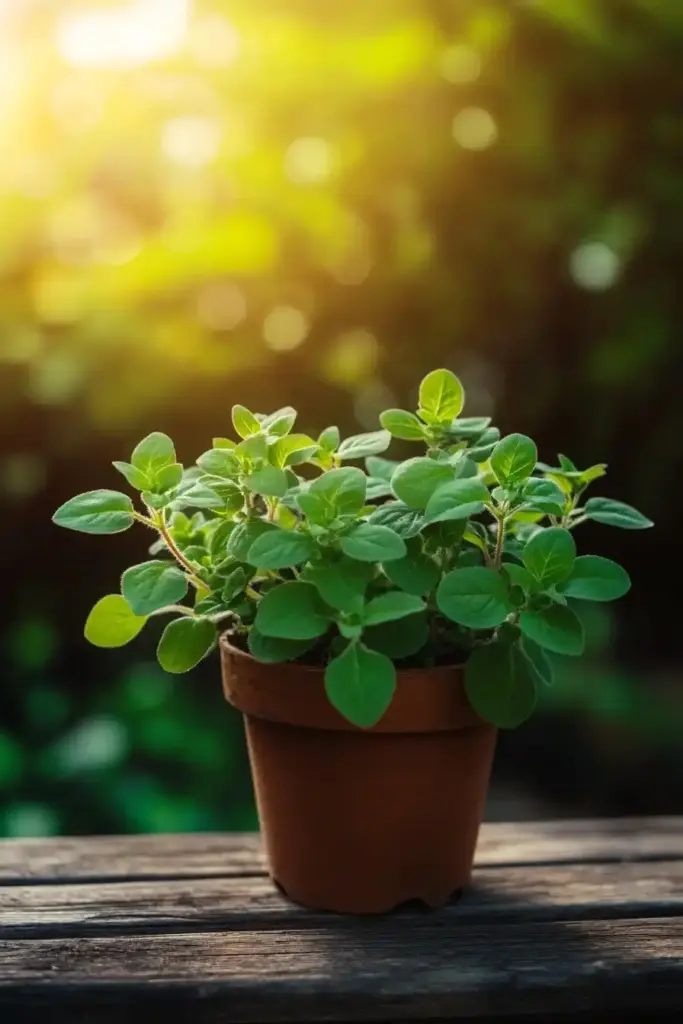
Why it works: This herb not only adds culinary value but its strong scent helps deter mosquitoes. The “Hot & Spicy” variety packs an extra punch both in aroma and flavor.
Container tip: Oregano trails nicely over the edges of a container, creating a cascading effect. Keep it in a sunny spot and let the soil dry slightly between waterings.
🍋 6. Lemon Balm (Melissa officinalis)
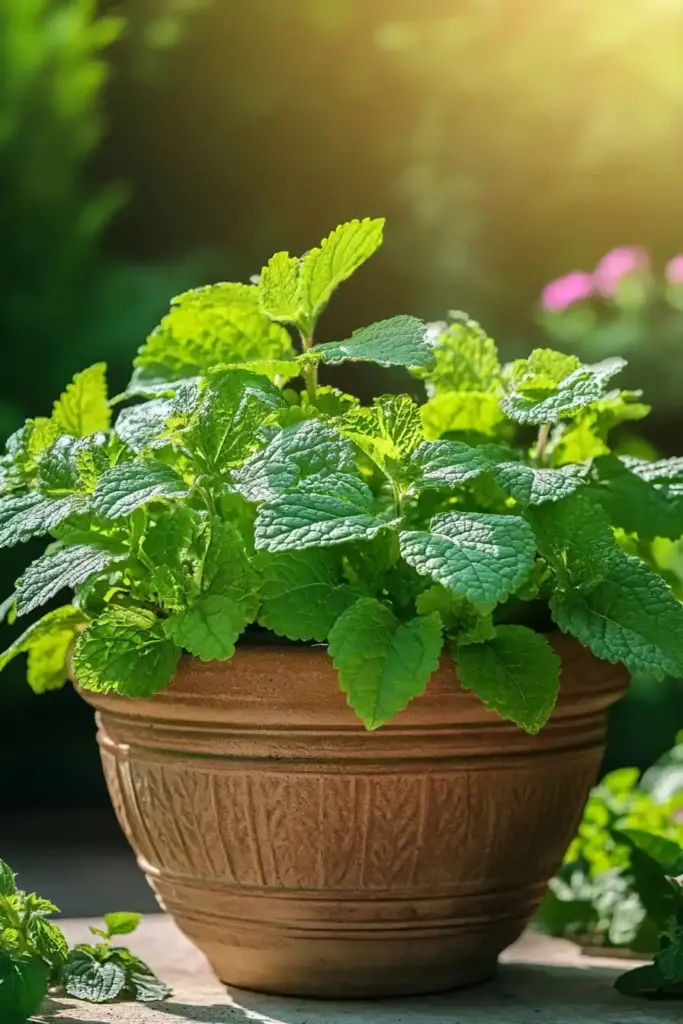
Why it works: A member of the mint family, lemon balm emits a clean, lemony fragrance that mosquitoes strongly dislike. It’s also calming and lovely in herbal teas.
Container tip: Be warned—lemon balm can be invasive if planted in the ground. In a container, it’s well-behaved and easy to control. Snip often to keep it tidy.
🧠 Pro Tip: Rub a leaf directly on your arms and legs to help deter bites while working in the garden.
🌱 7. Thai Basil (Ocimum basilicum var. thyrsiflora)
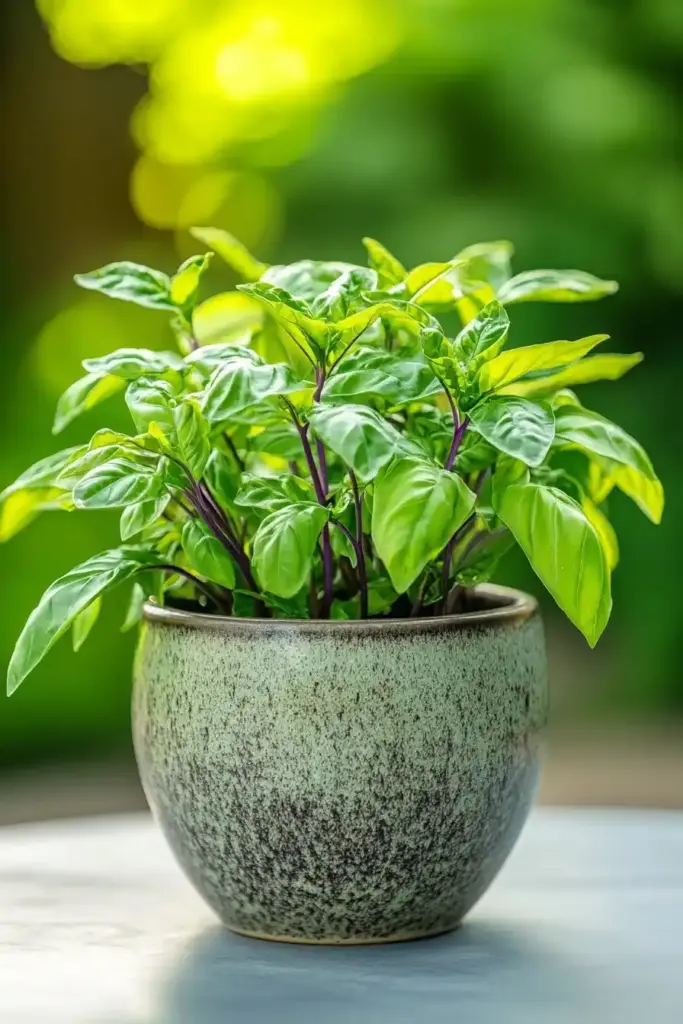
Why it works: All basil varieties deter mosquitoes, but Thai basil is particularly attractive with its purple stems and spicy aroma.
Container tip: This heat-loving herb needs full sun and frequent watering. Pinch back the tips to prevent flowering and encourage bushy growth.
🍛 Culinary Bonus: When you’re not using it to keep bugs away, toss some into your next curry!
🌞 8. Lemon Thyme (Thymus citriodorus)
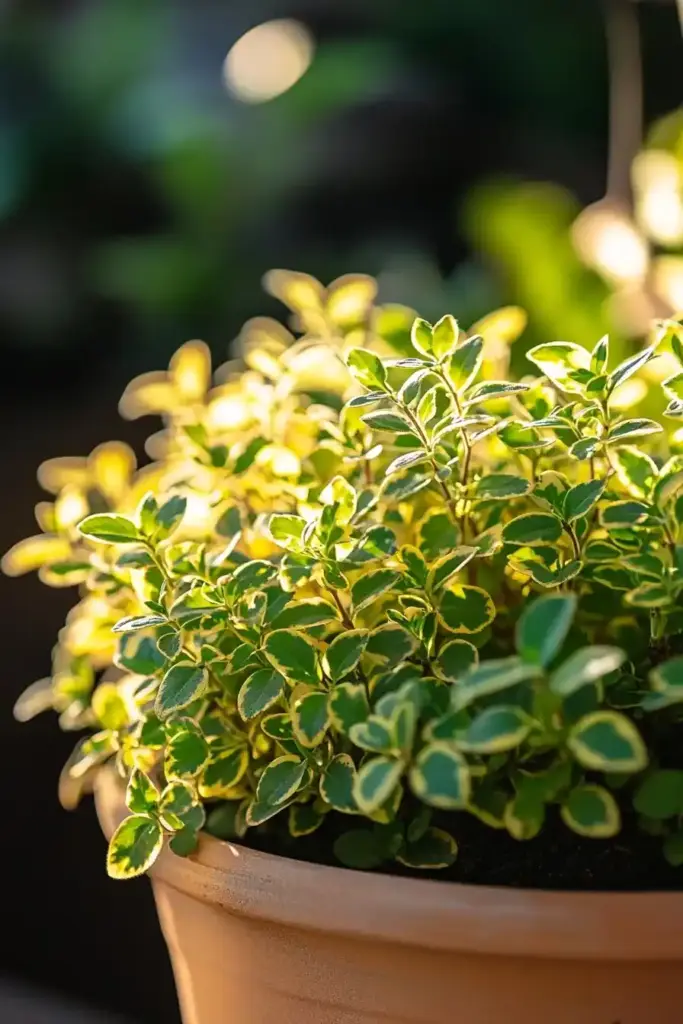
Why it works: Lemon thyme offers a citrus twist on a garden classic. The oils in its leaves are effective at repelling mosquitoes—and smell amazing when brushed.
Container tip: This low-growing herb is great for the edges of your planter. It’s drought-tolerant and thrives in full sun with minimal care.
That wraps up our list of superstar mosquito repellent plants for container gardens. These herbs and flowers not only defend your space but turn your planter into a feast for the senses—visually and aromatically.
🚫 Why Citronella Scented Geraniums Might Not Be Your Best Bet
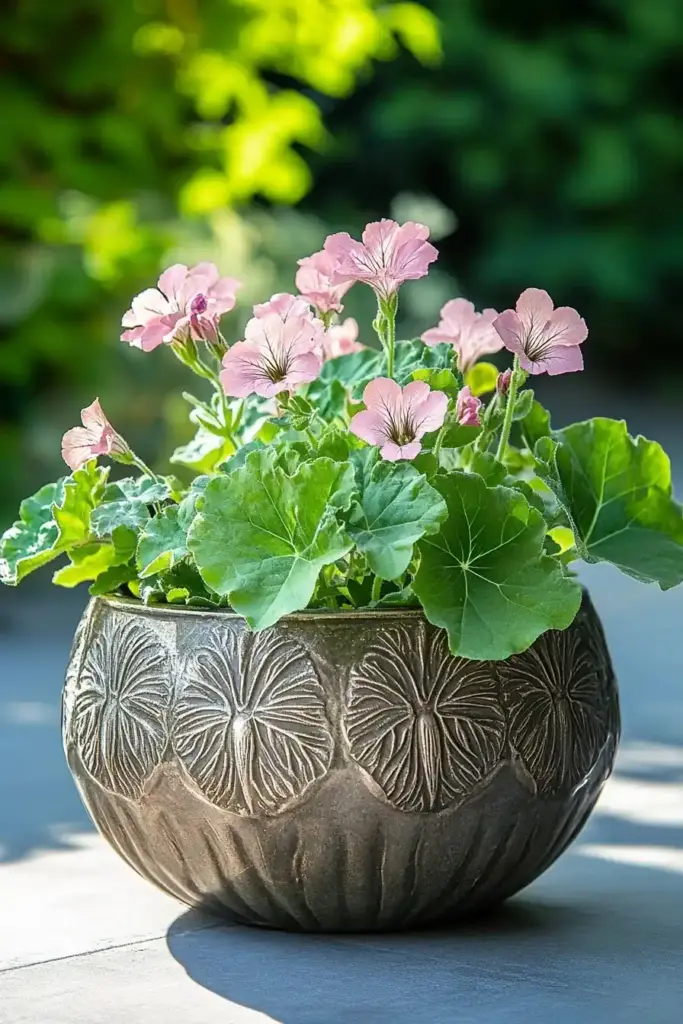
Walk into any garden center during mosquito season and you’ll probably see “Mosquito Plants”—usually a type of scented geranium marketed as a natural bug repellent. These plants smell like citronella, which is indeed a known mosquito deterrent. So what’s the issue?
The Truth Behind the Hype
The citronella scent in these geraniums doesn’t come from citronella grass, the actual plant used in many commercial mosquito repellents. Instead, the “mosquito plant” is a Pelargonium citrosum, a geranium hybrid that has a citrusy aroma but far less of the active compounds that make true citronella grass effective.
Looks Great, Works… Meh
These plants are undeniably pretty and have a lovely lemony scent when you rub the leaves. However, research and anecdotal evidence suggest they don’t release enough citronella naturally to significantly deter mosquitoes unless the leaves are constantly bruised or crushed—and even then, the effects are minimal and short-lived.
A Better Choice?
If you love the look and scent of citronella geraniums, feel free to include one in your container garden. Just don’t rely on it as your primary line of defense. The other plants listed earlier (like lemon balm, lavender, and basil) are far more effective and versatile for mosquito control in real-world settings.
📍 Where to Place Your Mosquito Repellent Container Garden

Strategic placement is key when it comes to maximizing the natural mosquito-fighting powers of your container garden. Here’s how to position your planter so it actually works for you—not just looks pretty.
1. Near Gathering Areas
Place your container close to where people spend time—on patios, decks, porches, or next to outdoor dining sets. These are the hot zones where mosquitoes love to bite, and where your plants can act as a natural shield.
2. At Entry Points
Set your planter near the entrances to outdoor areas—like the top of the stairs, along walkways, or just outside a screen door. As people (and pets!) brush by the foliage, they’ll release the plants’ aromatic oils into the air.
🧠 Bonus Tip: Encourage guests to rub the leaves gently as they pass. Not only will this enhance the scent around the area, but a little essential oil transfer to the skin adds a layer of natural repellent.
3. Full Sun for Full Power
Most of the plants in your mosquito-repelling lineup need 6–8 hours of direct sunlight each day to thrive and produce their scent-rich oils. So while you want them near high-traffic areas, make sure those spots are also getting enough light.
☀️ If you’re working with shady corners, consider rotating the planter every few days to make sure all sides get sun exposure.
4. Use Multiple Containers for Coverage
If you entertain in multiple spots or have a large backyard, consider creating several smaller containers instead of one big one. This lets you spread the protection across your property and boosts your garden’s overall mosquito-repelling radius.
🧪 Additional Natural Mosquito Control Tips
Even with the best plant lineup, mosquitoes can still sneak through. Here’s how to boost your defenses with a few tried-and-true, eco-friendly tricks.
🕯️ 1. Make Your Own Citronella Candles
Pair your plant power with some DIY ambiance. Citronella candles made with essential oils from true citronella grass, lemon eucalyptus, or lavender can help mask scents that attract mosquitoes—like sweat and carbon dioxide.
🧠 Pro Tip: Place a few candles around seating areas at foot-level. Mosquitoes typically fly low, and the scent helps create a protective “bubble.”
🌿 2. Rub Plant Leaves on Your Skin
Some mosquito-repelling plants (like lemon balm, mint, and thyme) are safe to rub directly on your skin for a quick burst of fragrance and protection.
💡 Note: Always patch test first to avoid skin irritation. Crush a leaf between your fingers, then dab the oil on your ankles, wrists, or neck.
🧴 3. Use an All-Natural Bug Spray
For extra protection, whip up a homemade mosquito spray using essential oils like:
- Lemon eucalyptus
- Lavender
- Tea tree
- Peppermint
Mix with witch hazel and distilled water in a spray bottle. Spray on skin and clothing before heading outside.
🌀 4. Eliminate Standing Water
This one’s critical: mosquitoes lay eggs in still water, and it doesn’t take much—just a bottle cap’s worth! Here’s what to check weekly:
- Birdbaths
- Plant saucers
- Buckets and watering cans
- Clogged gutters
- Kids’ toys or garden décor
Dump or refresh any standing water, and your mosquito population will drop fast.
🐦 5. Attract Natural Predators
Birds, bats, dragonflies, and frogs love to snack on mosquitoes. You can attract these helpful allies by adding a birdhouse, pond, or insect-friendly plants to your yard.
🌼 Native flowering plants and shallow water features will invite dragonflies and birds, which act like your personal pest control squad.
🌿 Love gardening inspiration? Follow me on Pinterest for bold plant ideas, tips, and seasonal color!
More Posts
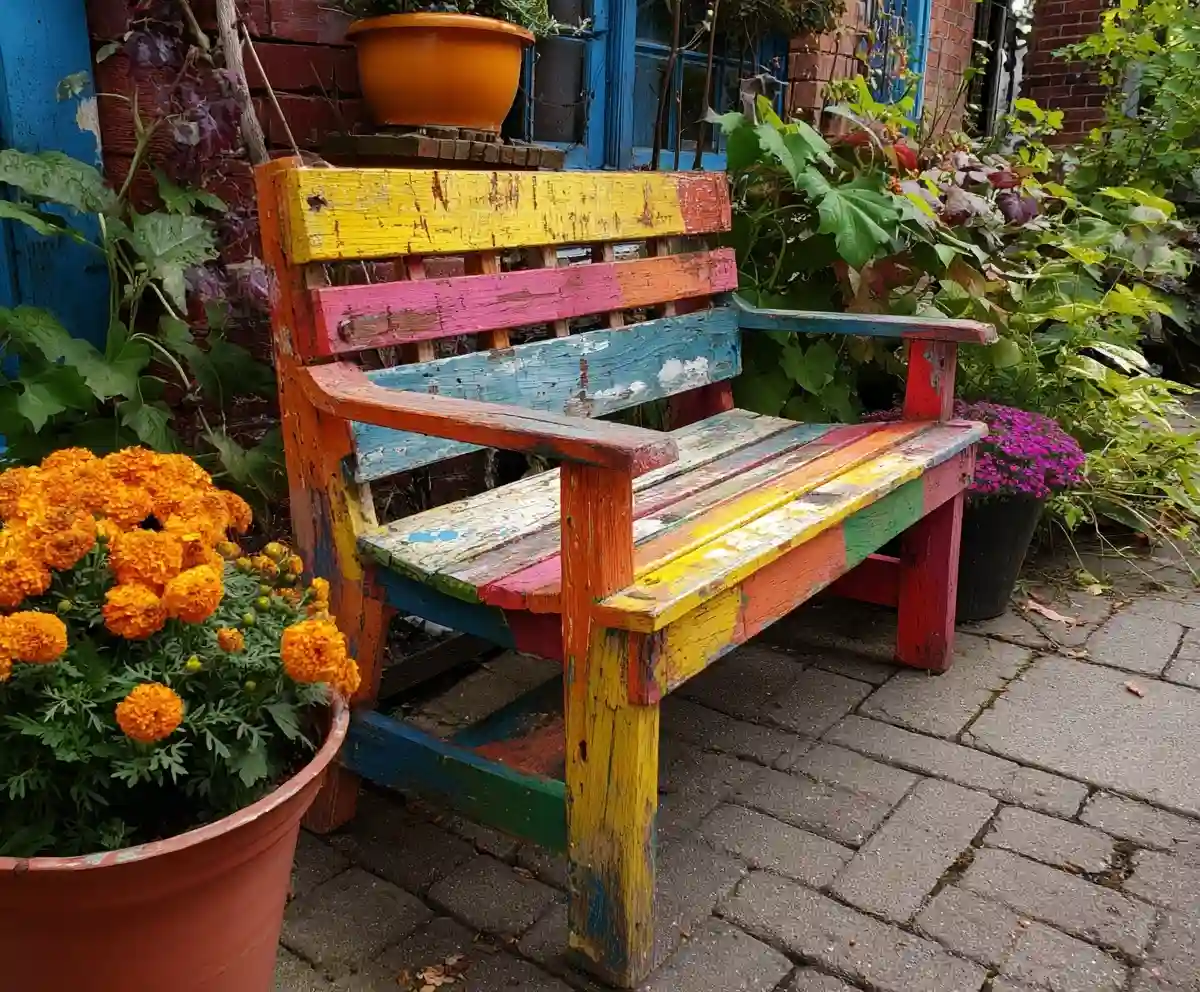
19+ Budget-Friendly Backyard Makeover Ideas
Backyard makeover ideas can turn even the most ordinary outdoor space into a warm, inviting retreat—without draining your wallet.
Read More →
21 Stunning & Simple DIY Clematis Trellis Designs
DIY clematis trellis designs are a beautiful way to blend creativity with function in your garden.
Read More →
12 Full Sun Perennials That Bloom All Summer
Explore a selection of hardy perennials that flourish and bloom beautifully in full sun throughout the summer.
Read More →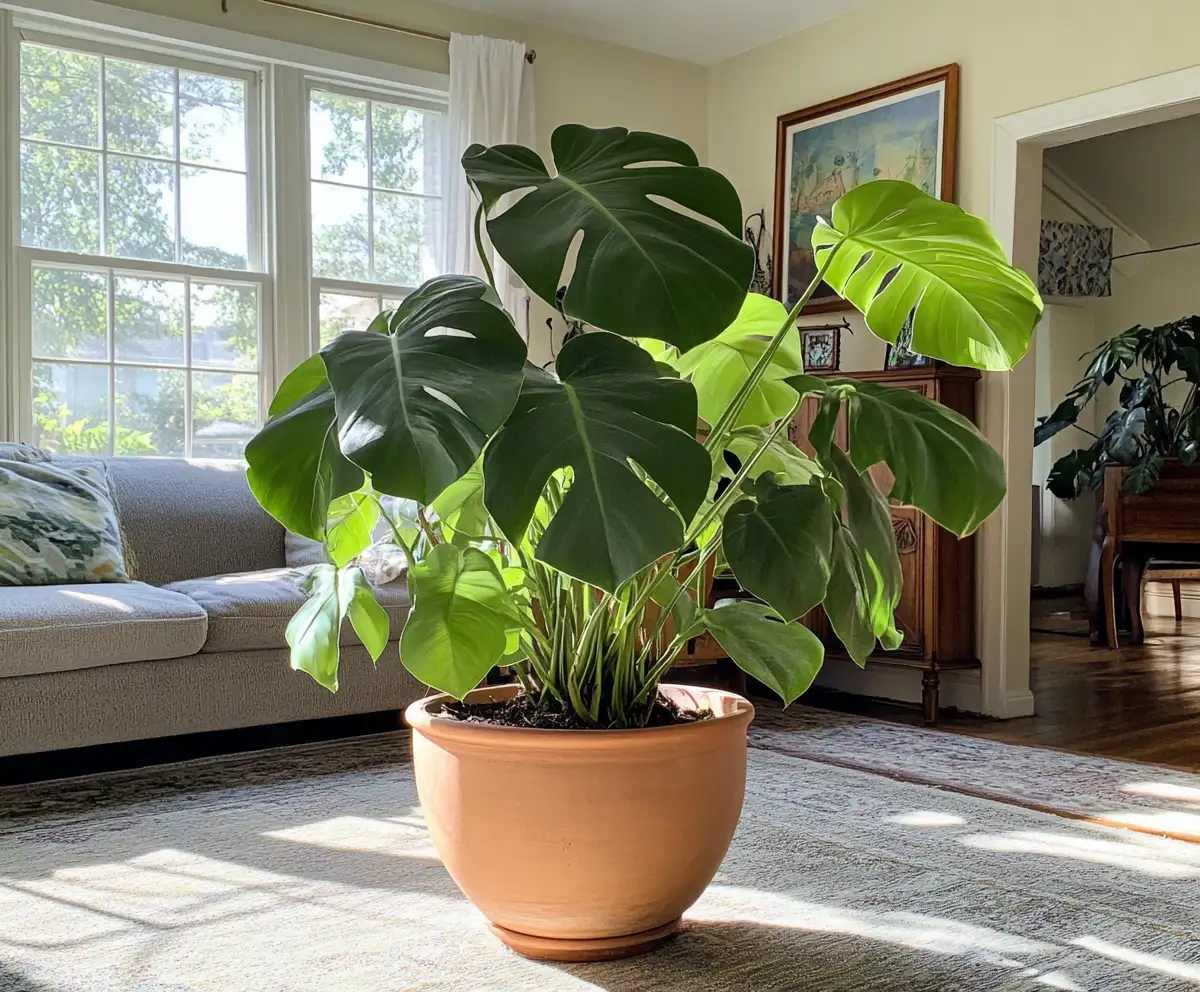
Houseplants for Living Room
Find the perfect houseplants to brighten and purify your living room while adding a touch of nature indoors.
Read More →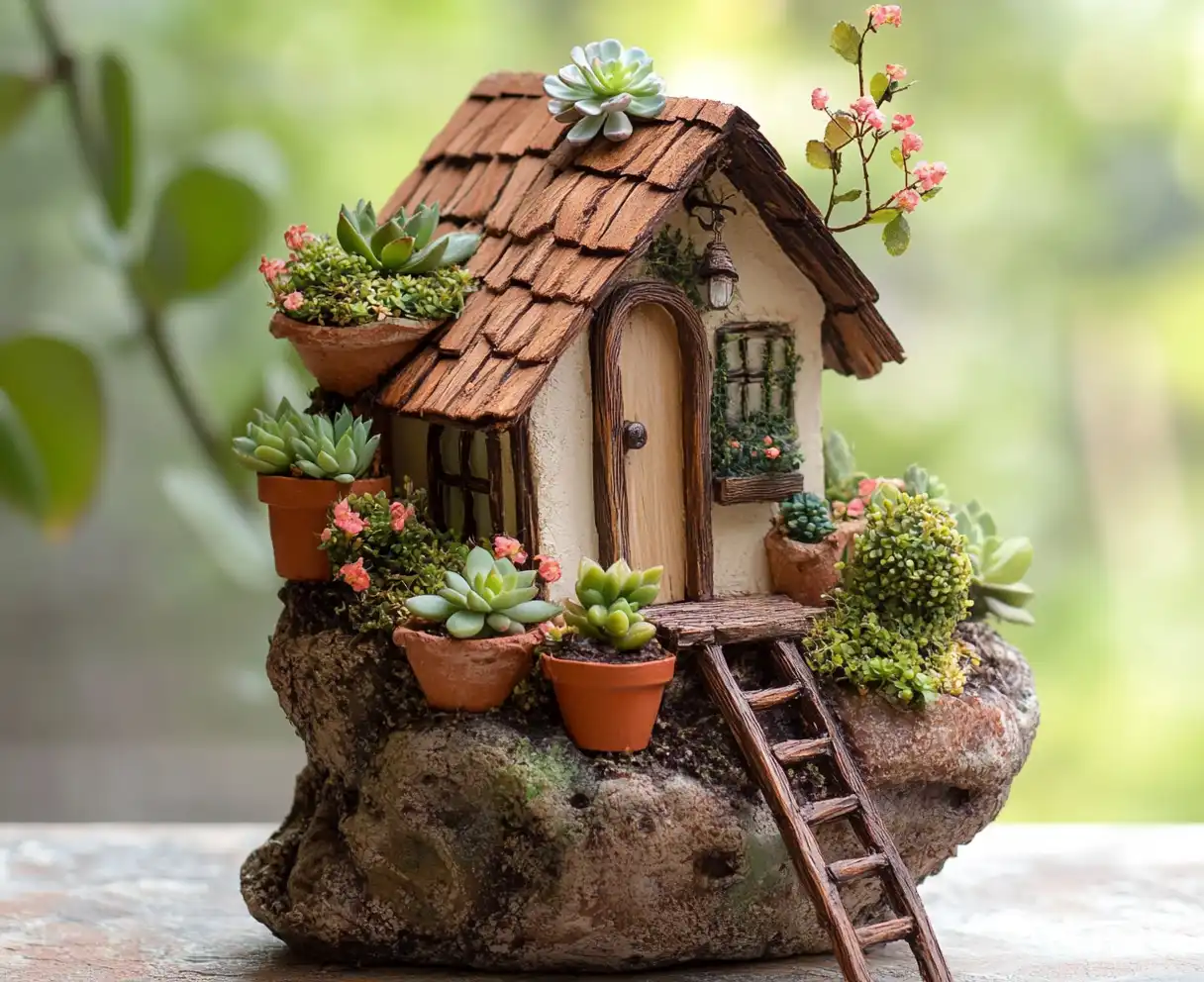
Backyard Play Area for Kids
Create a fun and safe backyard play area for kids with these inspiring design ideas and tips.
Read More →
Top Privacy Trees
Discover top tree varieties that provide natural privacy and enhance your outdoor space.
Read More →
